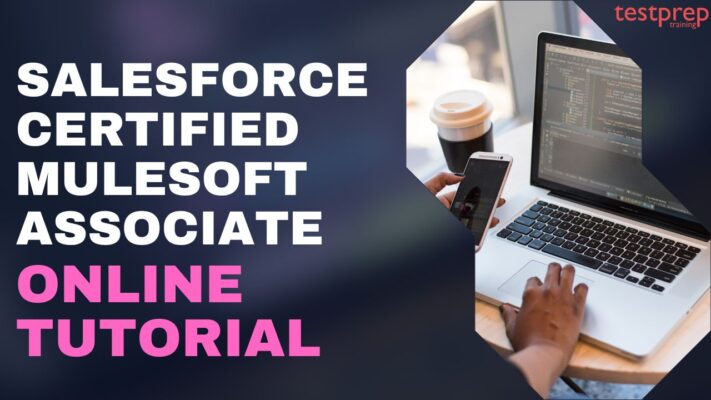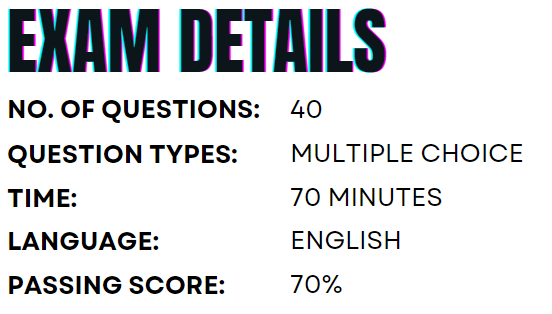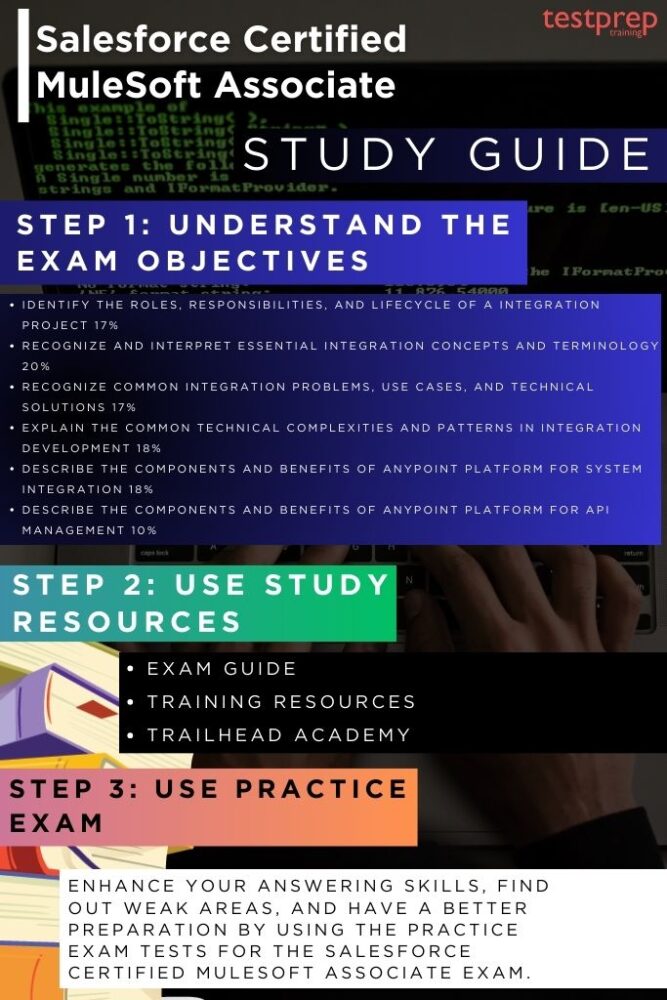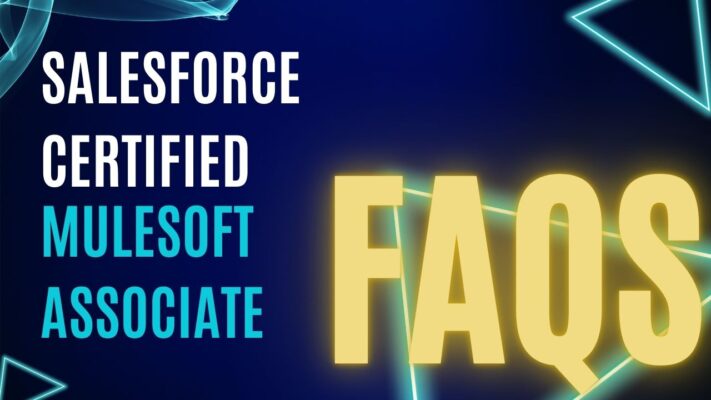Salesforce Certified MuleSoft Associate

The Salesforce Certified MuleSoft Associate certification is designed for individuals eager to contribute effectively to a MuleSoft project team. It recognizes those with a solid understanding of core integration principles and API-led connectivity concepts and terminology.
Knowledge Requirement
Candidates for the Salesforce Certified MuleSoft Associate should have knowledge, skills, and experience in the following areas:
- Understanding of the roles, responsibilities, and lifecycle stages of a standard integration project
- Familiarity with key integration concepts and terminology used by MuleSoft architects and developers
- Awareness of common integration challenges, primary use cases, and suitable technologies for solving them
- Insight into technical complexities often encountered in integration development
- Knowledge of the components and advantages of the Anypoint Platform for system integration and API management
Exam-Related Job Role
Typical job roles for a Salesforce Certified MuleSoft Associate may include:
- Developers
- Architects
- Project Managers
- Technical Project Managers
- Integration Product Owners
- IT Professionals
- IT Operations
Exam Details

The Salesforce Certified MuleSoft Associate exam consists of 40 multiple-choice questions and up to five non-scored questions, with a time limit of 70 minutes, including time for the unscored questions. To pass, candidates must achieve a score of 70%. The exam is available as a proctored test, either at a testing center or online. No hard-copy or online reference materials are permitted during the exam.
Course Outline
The Salesforce Certified MuleSoft Associate Exam evaluates a candidate’s knowledge and skills across specific objectives. Candidates should be interested in contributing as knowledgeable members of a MuleSoft project team. They should understand key integration concepts, API-led connectivity, and terminology, along with the features and advantages of the Anypoint Platform for system integration and API management. However, the major topics include:

– Identify the roles, responsibilities, and lifecycle of a integration project 17%
- Identify the common reasons that IT integration projects frequently fail.
- Define the IT delivery gap and describe MuleSoft’s approach to closing it.
- Describe the characteristics and roles of an API-led IT delivery model that emphasizes both production and consumption.
- Describe the common delivery methodologies for integration projects.
- Identify key DevOps practices and tools for building, testing, deploying, and delivering integration solutions.
- Identify and describe the steps of the design, implement, and management stages of MuleSoft’s recommended product-centric API lifecycle.
- Describe the roles and responsibilities within a typical MuleSoft integration project team.
– Recognize and interpret essential integration concepts and terminology 20%
- Distinguish between Infrastructure as a Service (IaaS), Platform as a Service (PaaS), and Software as a Service (SaaS).
- Identify the types of virtualization, computing, and storage infrastructure required by enterprise systems and describe the principles of system scalability.
- Classify and describe common networking protocols used in system communication.
- Recognize the differences between common data formats (for example, XML, YAML, and JSON) used in transformations and configuration files.
- Define and describe the core concepts of API and enterprise system security.
- Identify and describe the HTTP components that enable RESTful web services.
- Define and correctly use the terms API implementation, API proxy, API interface, API client/consumer, and API invocation.
- Identify and classify RESTful, SOAP, AsyncAPI, and GraphQL APIs.
– Recognize common integration problems, use cases, and technical solutions 17%
- Classify and describe the characteristics of common enterprise systems.
- Classify and describe the tradeoffs of legacy and modern integration approaches.
- Given a complex business problem, identify the fundamental integration use cases that can deliver an end-to-end business solution.
- Describe the purpose and function of the different classes of integration technologies.
- Identify the types of integration technologies that are most suitable to realize different integration use cases and business scenarios.
- Deconstruct an integration solution into its integration system constituents.
– Explain the common technical complexities and patterns in integration development 18%
- Describe the differences between the request-reply, one-way, multicast, batch, and stream interaction patterns.
- Explain the differences between the aggregation, orchestration, and choreography composition patterns.
- Describe the purpose of an API specification and the benefits of following a design-first approach to API development.
- Describe and compare observability approaches for integration solutions including logs, metrics, and tracing.
- Design MuleSoft applications using common features of core connectors.
- Describe the differences between cloud, hybrid, and on-premise deployment architectures.
- Describe the differences and tradeoffs between monolithic and microservices application architectures.
- Describe the difference between a service mesh and an API gateway.
– Describe the components and benefits of Anypoint Platform for system integration 18%
- Identify the primary components of Anypoint Platform and their benefits for system integration.
- Identify and describe the common characteristics of popular Anypoint Connectors for connecting to software applications, databases, and protocols.
- Identify the components and describe the benefits of the Anypoint Platform runtime planes and control planes.
- Describe the MuleSoft-hosted and customer-hosted deployment options for Anypoint Platform.
- Describe the uses and benefits of the Anypoint Platform development tools and languages for integration developers and DevOps teams.
- Describe and classify the types of reusable assets in Anypoint Exchange that form the building blocks of integration solutions.
– Describe the components and benefits of Anypoint Platform for API management 10%
- Identify the primary components of Anypoint Platform and their benefits for API management.
- Identify how MuleSoft products realize the goals of full lifecycle API development and Universal API Management (UAPIM).
- Explain the advantages of API-led connectivity with Anypoint Platform over other integration and API management approaches.
Salesforce Certified MuleSoft Associate: FAQs
Salesforce Exam Candidate Code of Conduct
At Salesforce, trust is a top priority, and safeguarding the security of Salesforce credentials is a shared responsibility. By participating in the Salesforce Credentialing Program, you must agree to the terms outlined in the Salesforce Credential and Certification Program Agreement.
Participants in the Salesforce Credentialing Program are expected to:
- Use official Salesforce study resources on Trailhead, including exam guides, trail mixes, and Trailhead courses to prepare for certification exams.
- Engage with the Trailblazer Community to find additional training, collaborate with peers, and connect with study groups or mentors.
- Follow the rules for both online proctored and in-person certification exams.
- Report any activity that compromises credential security to the Credential Security team.
Participants in the Salesforce Credentialing Program are prohibited from:
- Sharing, using, or seeking out certification exam questions and answers, or superbadge solutions.
- Requesting, offering, or accepting assistance during your certification exam.
- Engaging in any activity that violates the Salesforce Credential and Certification Program Agreement.
Violations of the Program Agreement may result in:
- Cancellation of upcoming exams.
- Suspension from taking online proctored exams.
- Ban from participating in any certification exams.
- Revocation of existing certifications and superbadges.
- Removal from the Salesforce Credentialing Program and the Trailblazer Community.
Salesforce Certified MuleSoft Associate Study Guide

1. Understand the Exam Guide
The Salesforce exam guide is created to assist you in assessing your readiness for the Salesforce Certified MuleSoft Associate Exam. It offers details on the ideal candidates for the certification, suggested training resources, documentation, and a comprehensive list of exam objectives—all aimed at helping you secure a passing score. To enhance your likelihood of success, Salesforce strongly advises combining hands-on experience, course participation, and self-study.
2. Use Recommended Training and Resources
Salesforce suggests a blend of hands-on experience, completion of training courses, Trailhead trails, and self-study in the topics covered in the Exam Outline. Recommended self-study resources for this exam include:
- Trailmix: Prepare for Your Salesforce MuleSoft Associate Credential
- Practice Exam: Salesforce MuleSoft Associate Practice Exam
- The practice exam allows you to become familiar with the question format and types you may encounter on the actual test. The questions reflect the style and difficulty level of the certification exam. By scoring your practice exam results, you can identify your strengths and areas needing further study.
3. Explore Salesforce Trailhead Academy
Explore Salesforce Trailhead Academy to enhance your preparation for the Salesforce MuleSoft Associate exam. Trailhead Academy offers a range of guided learning paths, known as Trailmixes, specifically designed to help you master the core concepts and skills required for the certification. Through hands-on modules, you can gain practical experience with key integration principles, API-led connectivity, and the Anypoint Platform. The interactive, self-paced learning format makes it easy to fit your studies into a busy schedule while building confidence for the exam. Trailhead Academy’s resources, including practice questions and real-world scenarios, ensure a well-rounded preparation to help you succeed on exam day.
4. Become Part of Study Groups/Communities
Joining study groups or communities can greatly enhance your preparation for the Salesforce MuleSoft Associate exam. These collaborative settings allow you to connect with other candidates who have similar objectives, making it easier to share insights, resources, and effective study strategies. Engaging in discussions helps deepen your understanding of complex integration topics, API-led connectivity, and MuleSoft tools while offering diverse perspectives.
Study groups often organize practice sessions, mock exams, and Q&A sessions, providing valuable opportunities to reinforce your knowledge and build confidence. By participating in these communities, you not only receive support but also build a network of peers that can be advantageous for your future career in the Salesforce ecosystem.
5. Take Practice Exam Tests
After completing your preparation for the Salesforce MuleSoft Associate exam, taking practice tests is an essential next step. This self-evaluation process allows you to identify your strengths and areas that need improvement, boosts your confidence, and sharpens your time management skills. Practice exams mimic the real testing environment, providing a realistic assessment of your readiness. By pinpointing specific topics that require further study, you can make targeted improvements before the actual exam. Regular self-assessment is key to optimizing your performance and ensuring success on exam day.



